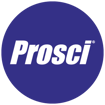
4 mins
Multinational Food Corporation Exceeds Expectations With SAP Implementation
This multinational food corporation embarked on a systems infrastructure update, including a three-year SAP implementation. The organization knew it was time to expand its organizational change team and build a structured, standardized approach to managing change.

6
Legacy systems eliminated with move to SAP
10%
Annual spend recaptured
500
Users impacted
Challenge
This food corporation needed better data collection, more informed decision-making, and higher efficiency, and therefore elected to deploy a new integrated SAP platform. However, this complex implementation would transition the organization from six different systems to a single unified platform, a significant undertaking impacting 500 users in finance and other departments.
Solution
- Attended Prosci Change Management Certification and Train-the-Trainer Programs
to equip the change team - Invested in the Prosci Advanced Practitioner Certification to bring change expertise in-house
- Used the Prosci Methodology, tools and resources to support the people side of the
SAP implementation
Interested in learning more about how we can help your organization succeed at change?
Let's Talk
The SAP implementation launched successfully on time and achieved its immediate objectives, despite the challenge of an acquisition mid-project.
— Partnering with Prosci
In Search of Operational Excellence
A U.S.-based multinational food corporation recognized the need to update its systems infrastructure and decision-making capabilities to accommodate an ambitious growth plan. This SAP implementation would eliminate six legacy systems by combining them into one unified system. It would also streamline payments, reduce payment errors, recapture 10% of annual spend, and provide users with more granular data so the company could make better, more informed business decisions.
Due to the complexity and reach of the integration, the project took three years to implement. It impacted 500 users in finance, accounting and other departments. These users would be working in a new system and the focus on granular data would take a significant mindset shift. The project was further complicated by an acquisition mid-flight. This eliminated the option to move deadlines and go-live and added a sense of urgency for the SAP implementation to conclude successfully on time.

Scaling change management for growth
The organization had an organizational change team for almost 20 years, consisting of a small team of change agents who focused on IT projects. This team partnered with a change management consulting firm to stand up a change management methodology and manage larger, more complex projects.
The team decided to pursue formal education around change management to build their credibility as internal partners during change and to leverage more change management best practices. As they recognized Prosci as the industry standard for change management certification and research, all members of the change team completed the Prosci Change Management Certification Program. One senior manager continued his education with Prosci by pursuing the Advanced Practitioner Certification. By achieving this advanced certification, he was recognized by the SAP project team as an expert in change management and a true partner to help them ensure optimal adoption of the new system.
Both this Advanced Practitioner and the rest of the change team adopted the Prosci Methodology and tools to apply change management to the SAP implementation.

The change lead began his change management work by first focusing on understanding who the impacted groups of the SAP implementation were and by understanding exactly how the implementation would affect them. He also worked closely with the change sponsor and project leader as a trusted agent and key member of the team.
Communications, coaching and resistance management
Once the team knew the change impacts and identified their audiences, they moved forward with detailed, customized communication plans so that managers were armed with the information they needed to guide their employees through the change process. Coaching and resistance management plans also equipped managers and proactively resolved concerns and reservations from employees about the new system.
Change agent network
By creating a robust change agent network, the change team empowered the business to own their change and be self-sustaining after go-live. The 40-person network started via internal nominations, with the change team asking the business to nominate people who knew their job, were respected by their peers, and had influence throughout their department. Nominees were then selected for the network based on time available to dedicate to the project and their desire to participate with it.
This network met formally once a month with the change team. In the first half of these meetings, the change team shared project updates, coaching tips and other action items. The second half of the meeting was driven by the change agents as a time for them to share feedback from their departments on how the change was going and what their people needed. Informal individual meetings with the change agents further amplified the network’s role as a feedback loop. The change and project team took this feedback seriously and modified their plans based on what they heard.
Sponsorship
The SAP implementation was supported by an excellent change sponsor who was active and visible throughout the project. He was well-respected by his peers and by his department, and he was at the right level within the organization to make decisions and to be seen as a credible leader.
In addition, this sponsor trusted his project leader and change lead to manage the implementation effectively. He trusted the entire team of IT and business professionals while holding them accountable. That confidence and investment helped motivate and empower the team.
Change management and project management integration
The change team easily integrated their work with the project team thanks to a shared vision of the implementation and mutual understanding and respect for each other’s expertise and role. The change lead and project leader worked easily together, as both respected the other’s field and saw the value they brought to making the implementation a success. By looking at each other as partners they could trust, they were able to stay connected and move the project forward together.
Stakeholder engagement
Mid-project, the change lead began walking the different corporate floors that would be impacted by the implementation, as part of his stakeholder engagement strategy. This brought him into one-on-one conversations with impacted individuals, particularly with those who were resistant to the idea of a new system. As the project progressed through desire and knowledge-building, the change lead made a point to continue these conversations and empower these people to be part of the solution by sharing their unique perspectives and expertise. By winning over and empowering these strong dissenters, the project gained even more momentum and several of the people who had been the most vocally resistant to the new system became its trainers and coaches.
Metrics and measurement
To gauge progress, the change team relied on the PCT Analyzer and Best Practices Audit, two cloud-based assessment tools from Prosci that allowed the team to keep track of project health. The PCT Analyzer ensured that the change lead, project lead and sponsor were partnering well together and supporting the project the way they needed to be.
The Best Practices Audit measured the SAP implementation against research on the seven top contributors to change success to ensure that the project was following best practices. By using the Prosci Best Practices Audit and readiness surveys, the change team had more detail on where the people and project were at and could make a plan to address any weaknesses as they arose. As a result, when the change team ran the audit a second time right before go-live, there were no alert factors.
The change team also created a customized change readiness assessment that established thresholds of readiness for training and go-live. This assessment was taken five months, three months, and one month before go-live. The change team used the assessments to adjust their plans in real-time to ensure that the change activities matched what impacted groups needed.
Results

The SAP implementation launched successfully on time and achieved its immediate objectives, despite the challenge of an acquisition mid-project. They eliminated the legacy systems, streamlined payment processes, and were able to provide the granular data necessary to improve decision-making. In addition, the implementation exceeded expectations by further automating and streamlining previously manual processes.

Founded in 1994, Prosci is a global leader in change management. We enable organizations around the world to achieve change outcomes and grow change capability through change management solutions based on holistic, research-based, easy-to-use tools, methodologies and services.
/Case%20Study%20Graphic-01.webp?width=175&name=Case%20Study%20Graphic-01.webp)
/Case%20Study%20Graphic-150x73.webp?width=175&name=Case%20Study%20Graphic-150x73.webp)

